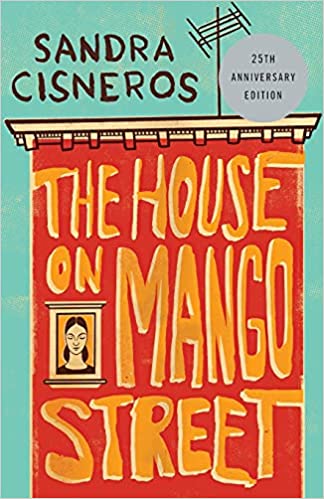Think classic novels are boring? Give these 6 a go!

A few minutes every morning is all you need.
Stay up to date on the world's Headlines and Human Stories. It's fun, it's factual, it's fluff-free.
Classic novels have a tendency to gather dust on our shelves once we leave school, especially in this day and age. Living the 21st century means being constantly bombarded with media in all forms. It means catching up with the latest shows, movies, books, articles, tweets, posts … you get the picture. The entire process of keeping yourself updated contributes to a vacuum of exhaustion.
And yet, there are still pieces of art – pieces of literature – that we turn to again and again to inform the way we live our lives. Classic novels live on, even if it seems nobody is really a fan of them.
Fortunately, there are also classic novels that are actually, well, fun. There’s a reason that some modern classic books have managed to stay relevant in every cultural zeitgeist since they’ve been published. While with some books it’s difficult to see how, with others it becomes immediately obvious. That being said, there are hundreds of fun classic books. Which ones are actually worth your time? Fortunately, we’ve got just the guide for you.
“The House on Mango Street” by Sandra Cisneros

This pick is more of a modern classic. Published in 1983, “The House on Mango Street” is an examination of the intersection of American and Mexican cultures in the American metropolis, Chicago specifically. While it doesn’t seem to read like a straightforward novel – more of a collection of short stories from a singular point of view – this book still manages to create a point of climax that engages the reader as much as it triggers a sense of revulsion.
Because it was written relatively recently and has a distinctly youthful, almost naive narrative voice, “The House on Mango Street” is a book that lends itself to a quick read. While it does include certain heavier topics – please read any trigger warnings prior to reading – it is revelatory of the Mexican American experience. Moreover, it is revelatory of the specific experiences that constitute the life of a young Mexican American woman in the United States.
“Wide Sargasso Sea” by Jean Rhys

For anyone who was assigned Charlotte Brontë’s “Jane Eyre” in high school, this one’s for you. If you were curious about the story of the woman in Rochester’s attic, look no further. Extrapolating upon the Creole background of Rochester’s first wife from “Jane Eyre,” this postcolonial novel actually gives her some agency as a character. No longer is this woman just a roadblock for Jane to overcome in her pursuit of Rochester; this is a real person who had to overcome her own challenges. And boy, is this story more fast-paced and captivating than Jane’s.
“Madame Bovary” by Gustave Flaubert

“Madame Bovary” is the kind of classic literature that most people spend their whole lives hearing referenced, but never actually read themselves – and for good reason. The title doesn’t really inspire all that much confidence. However, the title of this book is imperative to its themes, and these themes are pretty compelling, even by 21st century standards.
A young woman can’t deal with the banality of provincial housewife life, so she makes the fatal mistake of confusing her own life and reality with that of fictitious heroines and ends up making immoral decisions because of this confusion? If this sounds protofeminist, that’s because it is.
Originally written in French, it’s difficult to find an English translation that will do Flaubert’s prose justice. Still, you’ll notice how complex and impressive his style of writing is, regardless. Known for his poetic language, Flaubert’s voice shines through in any language. Also relatively short, you may find yourself blurring the lines between fact and fiction soon after completing it.
“Slaughterhouse Five” by Kurt Vonnegut

Vonnegut is one of the few authors whose works have actually aged staggeringly well through the years. “Slaughterhouse Five” is no exception. It could’ve been written just yesterday. Vonnegut’s biting humor and no-bullshit style truly resonates with readers of every generation. On the surface, “Slaughterhouse Five” is a science fiction novel that partly takes place in World War II Germany. And that reading of this book is perfectly valid. Nonetheless, this book holds up through second reading through the lens of war PTSD. Every time you stifle a laugh while lost in Vonnegut’s words, you’re equally likely to be stifling tears. Good luck finding a single person on Earth who dislikes this book.
“Strange Case of Dr. Jekyll and Mr. Hyde” by Robert Louis Stevenson

We all know this story … or, at least, we all think we do. And that’s exactly why it’s worth a read. Discover the actual narrative behind the legend of Dr. Jekyll and Mr. Hyde with this novella. Complete with staggering imagery and multiple points of view, “Strange Case of Dr. Jekyll and Mr. Hyde” will keep you on your toes. Similar to contemporary favorites like “Jurassic Park,” “Dr. Jekyll and Mr. Hyde” is a discussion of ethics in the science community, a discussion that is particularly relevant right now.
“The Stranger” by Albert Camus

Who better to read an absurdist novel from than the father of absurdism himself, Albert Camus? Told from a somewhat dissociated point of view, you may find yourself distanced and enamored with this narrative in equal measure. Another quick read, you’ll never forget picking this one up. “The Stranger” tells the story of a truly surreal – absurd, if you will – murder trial, told by the defendant himself. It’s unclear, at points, whether he’s being accused of murder, or some other infraction entirely. And, truly, the entire thing is so weird that it’s a blast, even if it is also an existential nightmare.
Have a tip or story? Get in touch with our reporters at tips@themilsource.com




Comments ()